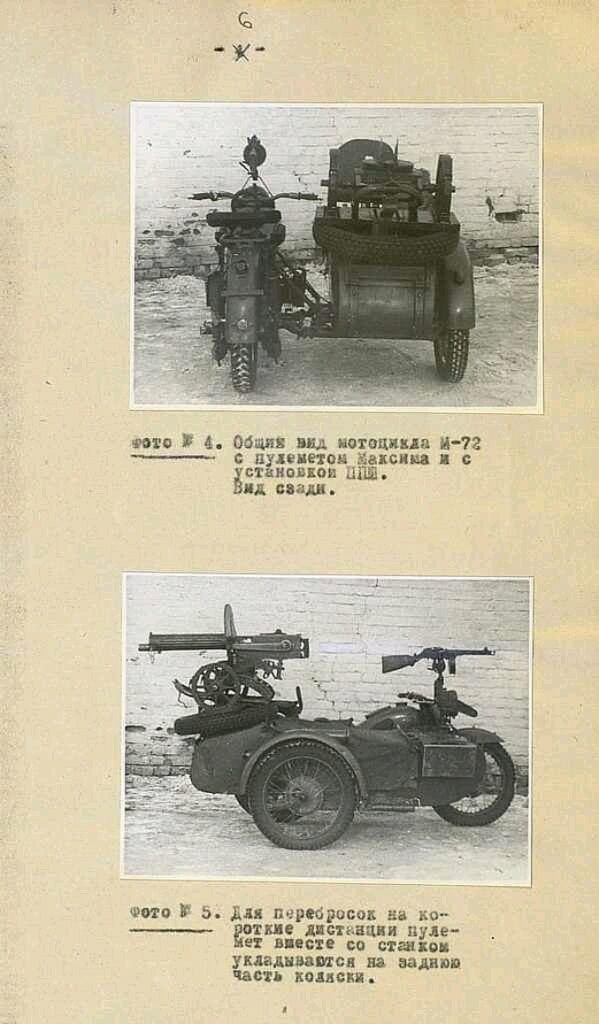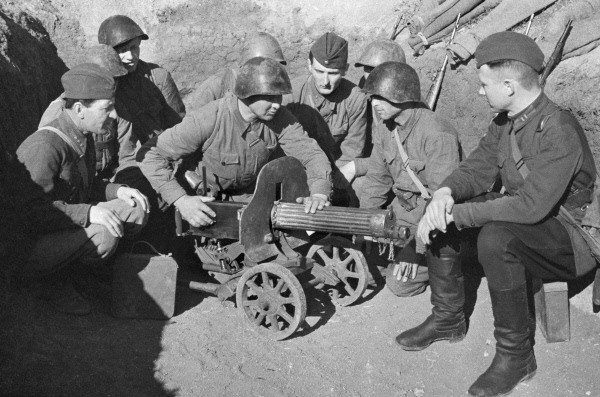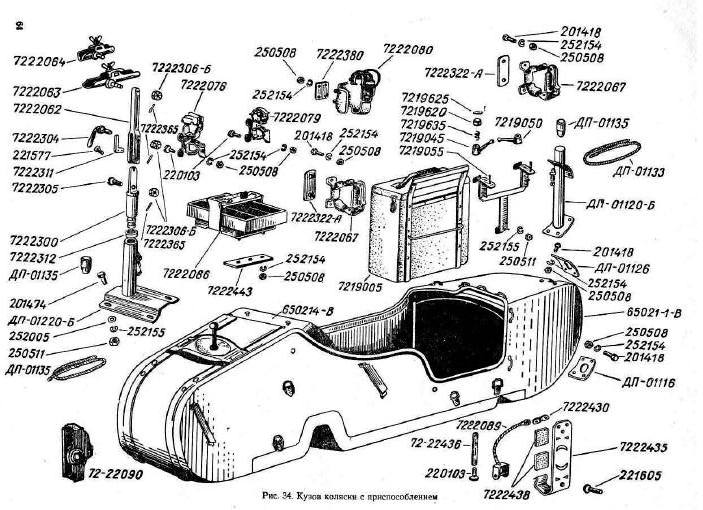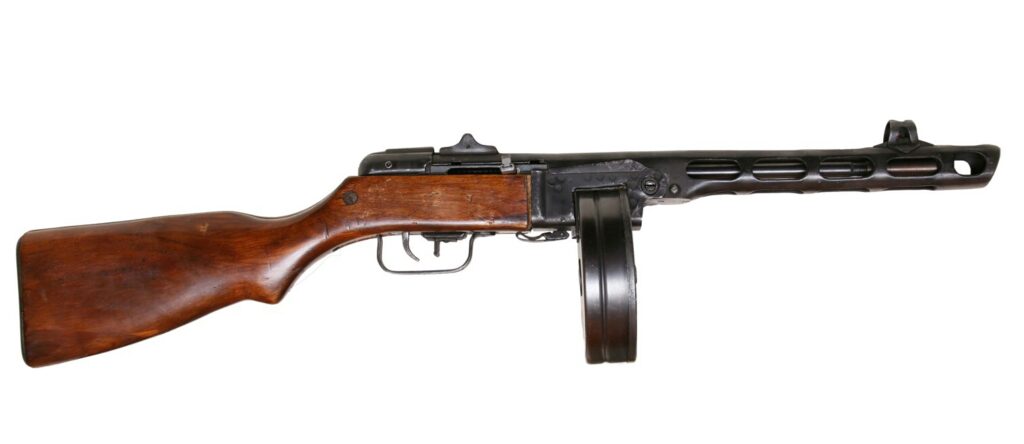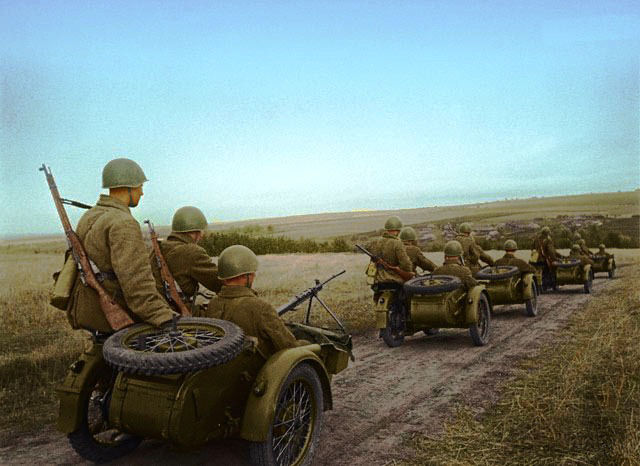Here we look at various armament solutions and accessories for the motorcycle and side-car.
But first, we have a bit of a mystery! The two pages in Russian shown below. The first page seems to be the start, yet there is a 3 written there (page 3?), the second has page 4 typed on it yet it has been crossed out and a 6 written there (page 6?). So where are the missing pages and are there more pages ? Corrections or additions are welcome.
Translation by our resident internationally accredited technical translator Russian to English, Evgeny Radchenko.
translation: page – 3
Brief instruction: Installing Maxim machine gun on to motorcycle M-72 and PPSh machine gun on motorcycle handlebars.

Performance of the motorcycle with the firearms installed:
- Work load… 375 kg
- Gross weight…. 730 kg
- Top speed on motorway… 80 km/h
Armament:
- Maxim machine gun… 1
- PPSh… 1
On-board ammunition:
- For Maxim machine gun… 3 belts 250 rounds each
- For PPSh… 3 drums 72 rounds each
- RGD grenade… 6 pieces
- RPG grenade… 4 pieces
Entrenching equipment set:
- Large spade… 1 piece
- Small spade… 1 piece
- Axe… 1 piece
page – 4 – typed, crossed out, page – 6 – written

As these two pages were typed on an old Cyrillic typewriter and the photos glued to the pages, just as in the ultra rare book we obtained from Steve Wiggins, see Album of history of Irbit models
It is likely this was also a limited print for military or high in-house circles. If anyone has the missing pages?reference photos:
At Kursk, the Red Army committed more than one million men, more than 3,275 tanks and 25,000 guns and mortars. Soviet riflemen like these had to hold off “tank fists” and German assault infantry supported by dive-bombers and heavy artillery fire. Soviet losses at Kursk amounted to 177,847 men killed, missing or wounded.
It was the emergence of the M-72 that allowed the Red Army to form highly mobile groups. For example, there were divisions with two pairs of motorcycles, one with a mortar and the other with the ammo for the mortar (mortar cycle).
The usual armament for M-72 in the Great Patriotic War was the Degtyareva (or Degtyaryov) light machine gun DP-28 – (Rus. Ручнй пулемет Пулемёт Дегтярёвa Пехотный). It was nicknamed the “Record player” (proigryvatel’) by Red Army troops because the disc-shaped pan magazine resembled a gramophone record and its top cover revolved while the weapon was fired.
The PPSh-41 (Russian: Пистоле́т-пулемёт Шпа́гина, tr. Pistolét-pulemyót Shpágina, lit. ‘Shpagin’s machine pistol’) is a Soviet submachine gun designed by Georgy Shpagin as a cheap, reliable, and simplified alternative to the PPD-40. A common Russian nickname for the weapon is “papasha” (папа́ша), meaning “daddy”, and it was sometimes called the “burp gun” because of its high fire rate.
Many other weapons, rifles, etc were also utilized to the war effort. Many sidecar variants were developed including flame-throwers, generator sets, mobile welding units, air compressors, fire response units, pumps, cable-layers etc. Side cars were also used as ambulances.
Coming to the present day, one young woman on a motorcycle can hit a target with a laser guided missile from kilometres away!
sources:
- RIA Novosti archive, image #668428 / Anatoliy Garanin / CC-BY-SA 3.0
- Lposka
- “The Eastern Front in Photographs”, John Erickson 1943. Photographer unknown
- Ernie Franke – Military Accessories for Russian Motorcycles
- multiply-b-cozz archives
Russian translation Evgeny Radchenko especially for b-cozz.com.
Note from Eugene: Reading this I found myself quite interested too…


